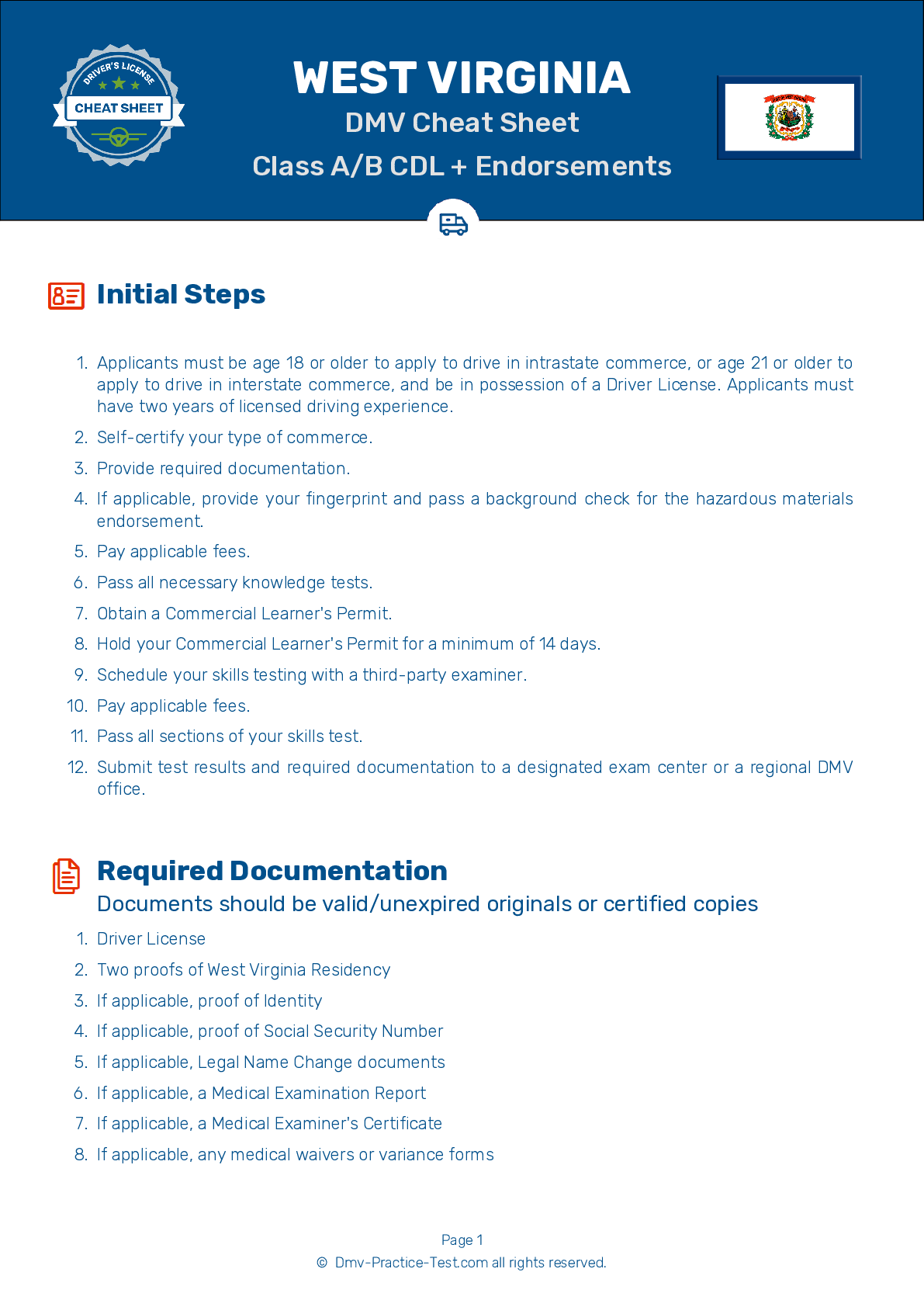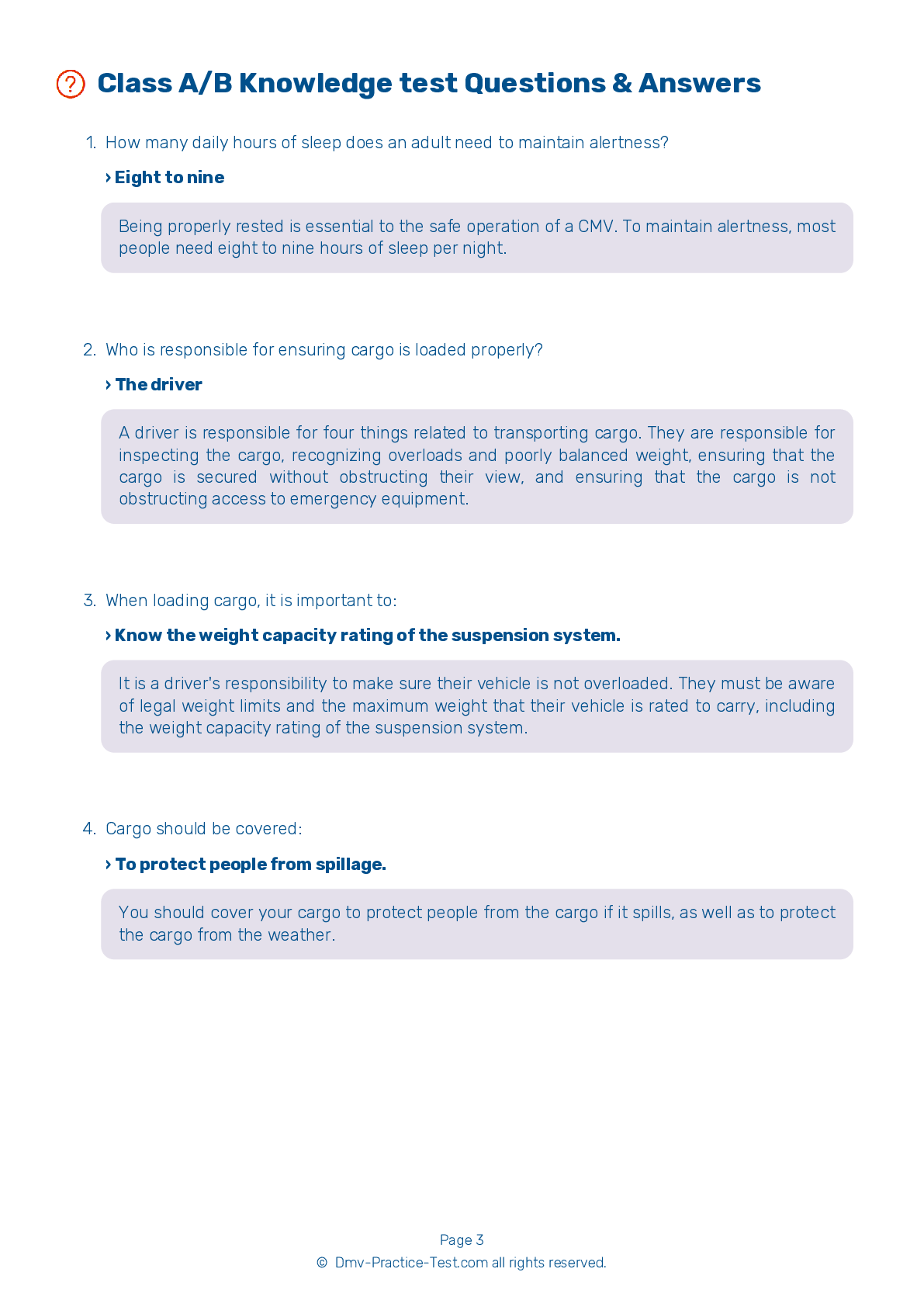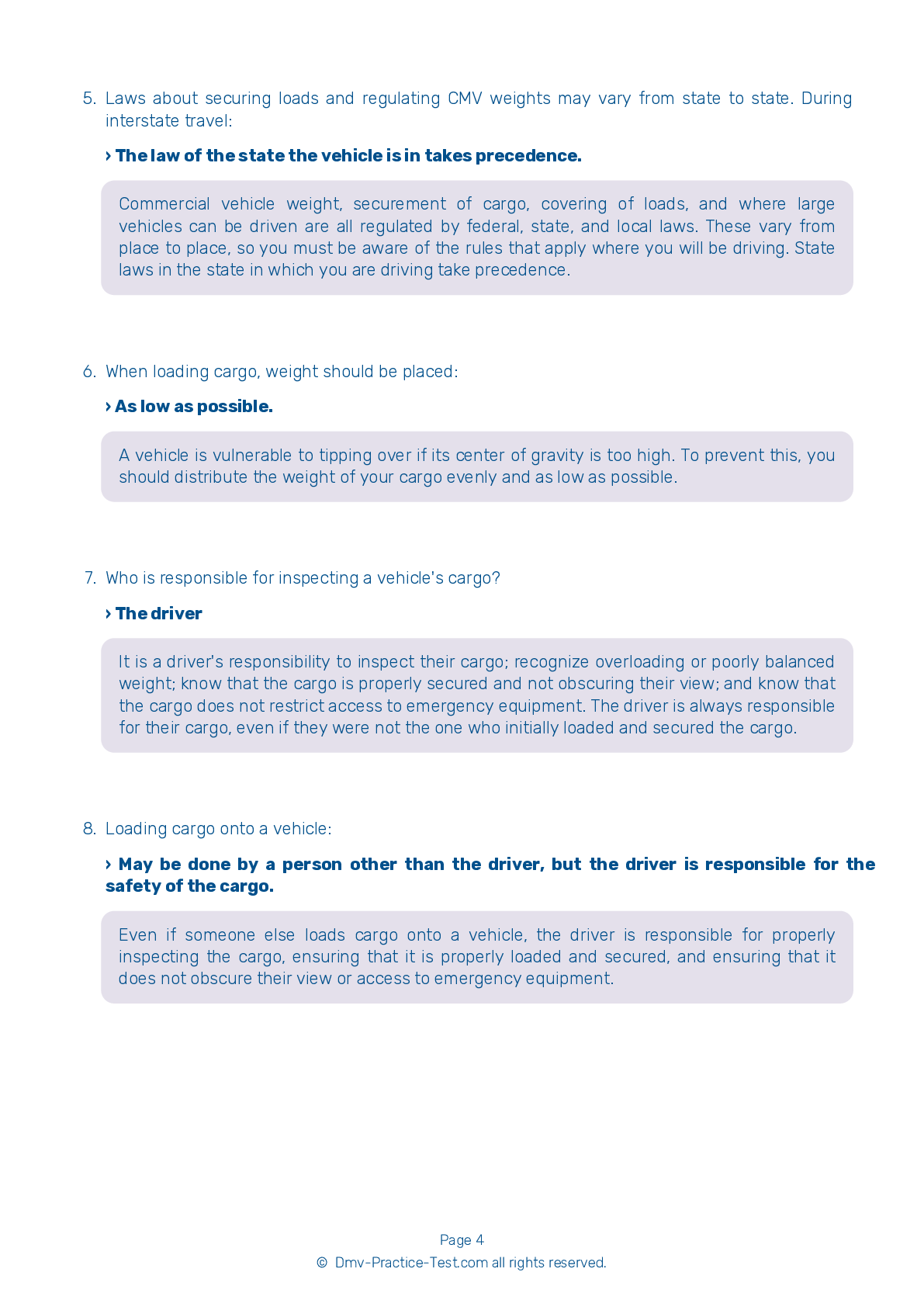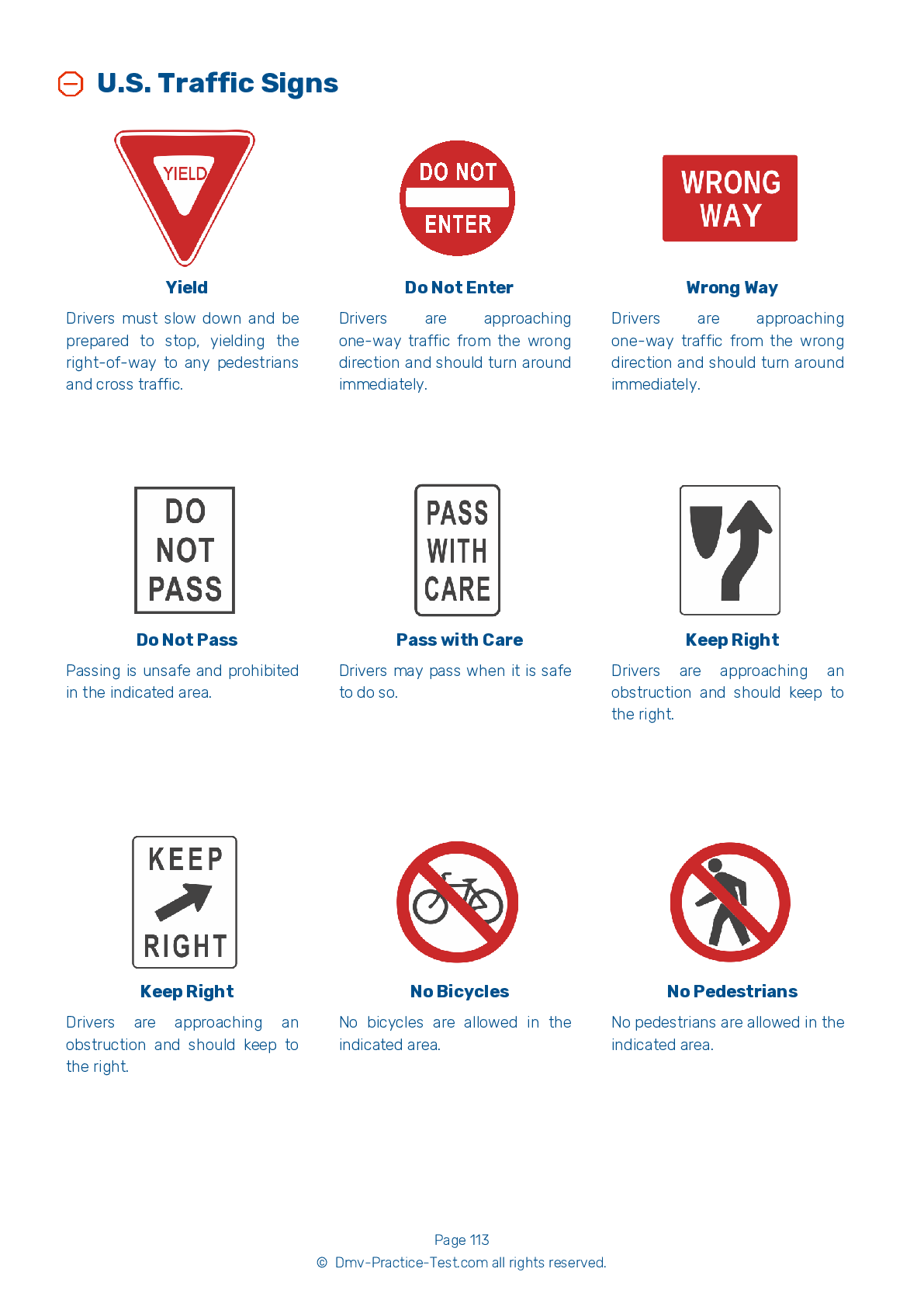Passenger Endorsement | West Virginia 2025 #1 Page 2 of 3
Train for FREE with our West Virginia CDL passenger endorsement practice test online. The official exam test consists of several obligatory parts, with all of them checking your knowledge of different blocks of road rules. If you need to obtain a WV DMV passenger endorsement in 2025, practice as much as possible. Free sample tests published on our website will help you check and improve your knowledge and boost your grades. Please bear in mind that DMV requirements for issuing a CDL permit with passenger endorsement may vary from state to state.
8 . If carrying a heavy load that is slowing you down, you should:
The right lanes of a roadway are generally intended for vehicles traveling more slowly than surrounding traffic. If being slowed down by a heavy load, you should stay in the right lane.
9 . On any upgrade, gravity will:
When driving uphill, you are fighting the force of gravity, which will slow down your vehicle.
10 . When you are driving while drowsy, you should:
The only effective way to deal with drowsiness while driving is to stop and sleep. Caffeine or other stimulant drugs may help you stay awake, but they will not keep you alert. You will likely end up being even more tired when the artificial stimulants begin to wear off.
11 . To correct a drive-wheel braking skid, a driver should do all of the following, except:
To correct a drive-wheel braking skid, you should first remove your foot from the brake pedal to allow the locked wheels to begin rolling again. Quickly steer in the direction you want to go, then countersteer to prevent your vehicle from skidding in the opposite direction.
12 . When you double your speed from 20 to 40 mph, your vehicle's braking distance will become ____ times longer.
If you double your speed, your braking distance will become four times longer. Similarly, the impact your vehicle would have in the case of a collision will also multiply by four.
13 . How many daily hours of sleep does an adult need to maintain alertness?
Being properly rested is essential to the safe operation of a CMV. To maintain alertness, most people need eight to nine hours of sleep per night.
14 . When a vehicle is started, warning lights and buzzers:
After an engine is started, the warning lights and buzzers for oil, coolant, charging circuits, and the Anti-Lock Braking System (ABS) should go out right away.
See the exact questions that will be on the 2025 West Virginia DMV exam.
99.2% of people who use the cheat sheet pass the FIRST TIME
Lillian MCcranie explains how our CDL study guide was helpful in passing the exam and recommends it to everyone.
Cameron tells us how he purchased the CDL exam, and found it to be a useful tool which helped him pass the exam and find a job.



